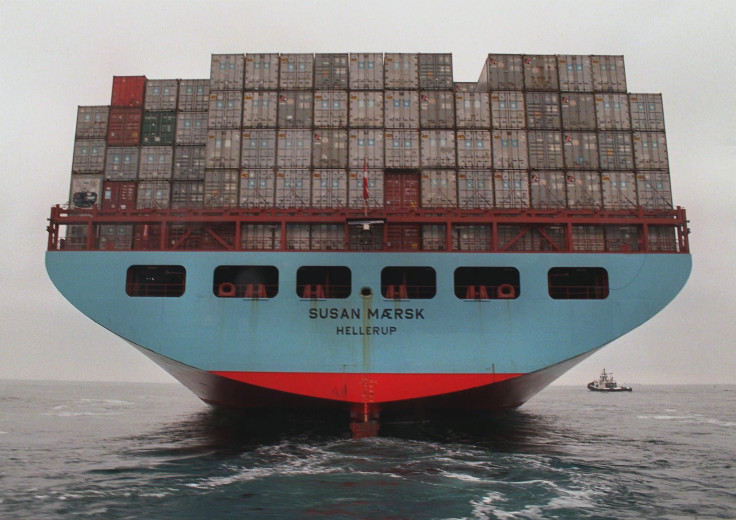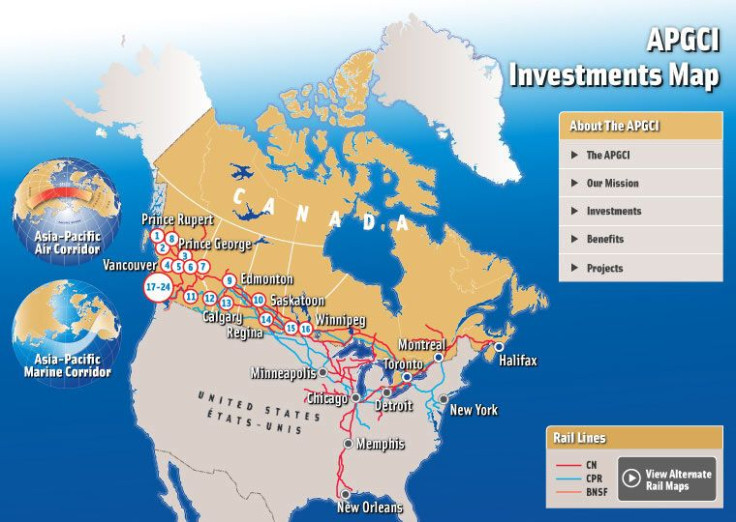US West Coast Port Labor Talks: Cargo Route Changes Are Not Permanent Because There Is No Viable Long-Term Alternative

For months, representatives of about 20,000 members of the International Longshoremen’s Association and their employers have been negotiating a six-year labor contract. The lack of success in the talks, now more than three months old, is raising concerns about a possible strike or slowdown ahead of the economically important U.S. holiday shopping season. Those concerns, in turn, are driving an increasing number of shippers to seek alternatives to U.S. West Coast ports.
But regardless of the alternative routes available in Canada, Mexico or through the Panama or Suez canals to the Eastern seaboard, the West Coast is the best current option for a great deal of U.S.-bound goods.
The fact is that Canada, for example, which has had double-digit growth in container traffic at its main West Coast ports since the U.S. labor talks began May 12, simply cannot process all the cargo bound for the U.S. West Coast. Mexico has one major Pacific port, but faces a similar problem in delivering goods by rail to its northern neighbor.
Last week, Fitch Ratings warned of broader economic impacts of prolonged labor negotiations between the International Longshore and Warehouse Union (ILWU) and the Pacific Maritime Association (PMA), which represents the ports and manages labor contracts. The financial ratings agency said the longer shippers need to use alternative routes the more likely they are to stay with them after a new labor contract is sorted. This would drive down business to the 29 U.S. West Coast ports, which have already seen their share of inbound containers drop from 50 percent in 2002 to about 44 percent last year, according to the PMA.
“If this shift were to persist from weeks into months, some shippers may continue to use alternative ports even after the ILWU contract is finalized and the risk of a strike or slowdown has passed,” Fitch said in an Aug. 11 note.
There's not a consensus about that. Cargo is backing up in Canada, underscoring the lack of capacity Canada’s pacific ports have for handling the massive amount of U.S.-bound goods. Earlier this month, DP World Ltd. (LON:DPW), the U.A.E.-based global marine terminal operator at Port Metro Vancouver, said it would no longer handle U.S. bound cargo, citing a lack of rail cars to receive the containers, according to the Journal of Commerce. TSI Terminal Systems, the largest container terminal at Vancouver, said it would continue to accept U.S.-bound cargo.
“Canada is a great Plan B, but if it were Plan A then shippers would be using them regularly,” Jason Kuehn, associate partner at New York-based transportation consulting firm Oliver Wyman, told International Business Times by phone on Monday. “Maybe one carrier or two will stay in Canada, but most of them will come back.”
The reason for that has to do with railroads.
“On the whole we don’t see a major shift to Canada happening,” Ben Hackett of Hackett Associates, a maritime industry adviser which tracks the world’s cargo traffic, told IBTimes by phone. “There’s limited capacity out of Vancouver and Prince Rupert because of the amount of the cargo. The rail lines are limited.”

A bigger threat to the cargo container business on the U.S. West Coast is simply that container ships are getting bigger, increasing the amount of goods that can be delivered per ship through Egypt’s Suez Canal to Europe and the U.S. East Coast on the same route.
“The shift away from the West Coast is being driven by larger container ships and increasing use of the Suez Canal to the Asia-Europe routes,” Hackett said. “These ships continue on through the Mediterranean to the East Coast, so in many cases it’s cheaper.”
In addition, once the recently restarted Panama Canal expansion project is finished it will likely steal some U.S. West Coast market share as capacity increases enough to make the trip from Asia to the eastern United States more efficient, putting pressure on weaker West Coast ports, like San Francisco-Oakland, to retain market share. The port facilities of Los Angeles and Long Beach, on the other hand, are going to remain vital to the flow of goods to the western United States for the foreseeable future, analysts say.
Meanwhile, the ILWU and PMA say they’re committed to keeping the flow of goods steady. On Monday PMA spokesperson Wade Gates said by email that the talks are still ongoing with nothing to report. Contract negations were suspended in the last week of July so that the ILWU could finalize a tentative agreement with a consortium of grain handlers in a bitter two-year old labor dispute that led the 60,000-member ILWU to drop out of the AFL-CIO labor umbrella organization over a jurisdiction dispute.
Among key issues in the talks between the ILWU and the PMA are the union's desire to keep its current health care benefits despite the estimated annual $190 million increase to their plans under the Affordable Care Act (ACA) that neither side in the negotiations wants to absorb. The union also expects guarantees to its jurisdiction over waterfront activities by other unions or outside contract labor. The PMA, meantime, wants the freedom to bring in electricians, mechanics and computer contract workers to perform duties it says ILUW workers aren’t qualified to do. The employers also want to increase the work day by an hour.
The PMA said that full-time longshore workers earns an average of $132,000 a year, which includes overtime, but the ILUW points out its current labor contract calls for $35 an hour for the most experienced workers, which would be $72,800 at full time without overtime. About 30 percent of the longshore workers received about 30 hours a week on average, according to the PMA’s recent annual report (pdf).
© Copyright IBTimes 2024. All rights reserved.





















